Estimated reading time: 10 minutes.
November/2016 - The Sigma 50-100mm f/1.8 DC HSM is an unprecedented zoom lens, with no peers on the market. With a constant f/1.8 aperture, it is larger than any f/2.8 zoom, and larger than most primes, as no one offers a “100mm f/1.8”. An exotic specification that follows the steps of “the other f/1.8 zoom” Sigma 18-35mm DC, its secret is in the format: while most lenses works on full frame cameras, these two are made for the smaller APS-C sensors. For “only” US$1099 you get a set of focal lengths (50mm, 85mm, 100mm), made for low light work or to isolate the subject, given the short depth of field. Is it the ultimate APS-C lens? Or does it try too much? Let’s find out!

At 17 x 9.3cm of 1490g of metals, plastics and rubbers, there’s no doubt we’re talking about an exotic spec when we see the 50-100mm f/1.8 DC. Big and heavy, it is truly a feat. of engineering and Sigma didn’t hold back in the use of high-end materials, capable of withstanding the demands of large glass pieces. With an internal barrel and mount made of metal, the extensive use of Sigma’s exclusive TSC (Thermally Stable Composite), a material more elastic than polycarbonate but with thermal expansion similar to aluminum, Sigma was able to create a robust piece, that reminds us of top-of-the-line 70-200mm f/2.8′s, that scream “workhorse”. The 50-100mm is far from a “walk around lens”, but instead made for professionals, used to handle high quality instruments.

In your hands the form follows the function, with a comfortable girth that balances the weight. Near the camera, let’s begin with the non-removable tripod collar, that features a curious low-profile design. While some lenses comes with long “tripod handles”, the Sigma comes with a shorter support, made to keep a lower center of gravity and a thinner profile. With 90º clicks and a pressure-knob lock, it works great even when supported by your hands, as your fingers gently lay on top of the rubberized zoom ring, that is on a higher position. Sporting a tall, deeply grooved rubber piece, it is more than enough to give traction to your fingers, smoothly rotating 80º clockwise, from 50-100mm. Videographers will enjoy the well damped movement, great for zoom pulls. But action photographers might find it too hard/slow to rotate, with some loss in agility.
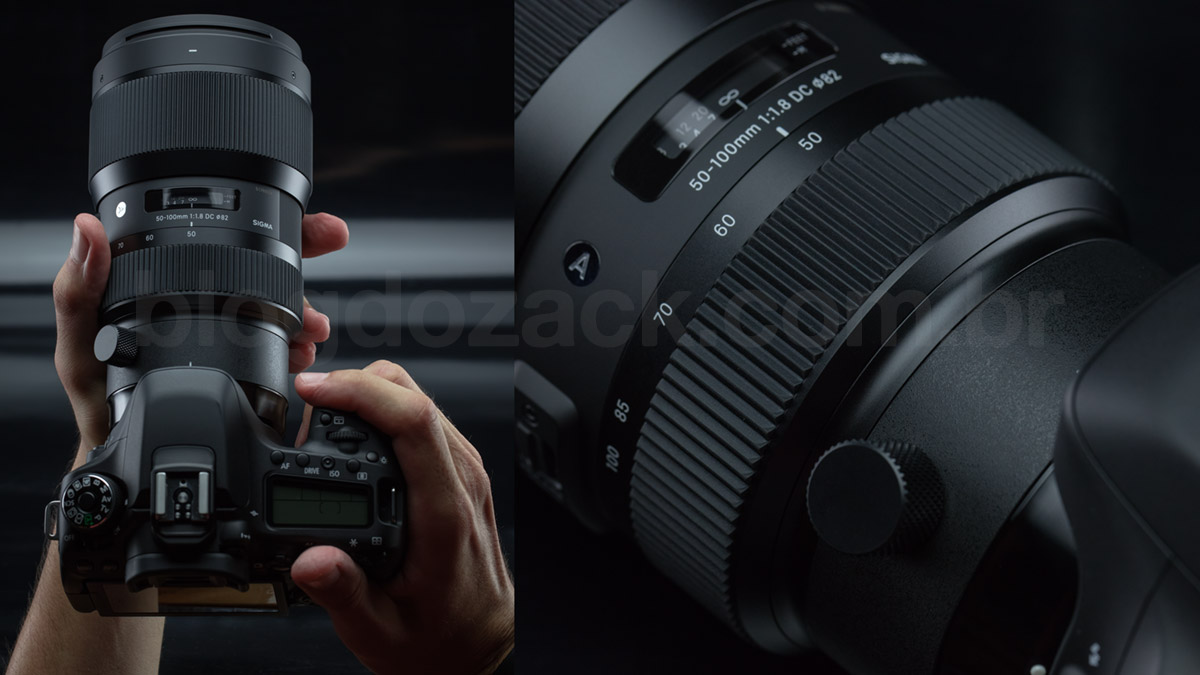
Near the center barrel, your thumb finds the AF/MF auto focus switch. Made to be operated with the camera’s at eye level, it’s kind of redundant as the frontal manual focusing ring supports full time operation; even at AF, you can override the motor position. At the top, a distance window displays feet and meter markings, from 0.95m (the lens minimum focusing distance) to infinity at about 150º. It’s also the rotation of the enormous frontal manual focusing ring, that’s the “highest” piece on the lens design. Extremely smooth and a joy to use, it is rubberized with a different tactile feedback from the zoom ring (the rubber grooves are closer to one another), making it impossible to mistake them. It’s clear Sigma’s attention to ergonomics on such a precise piece of equipment.
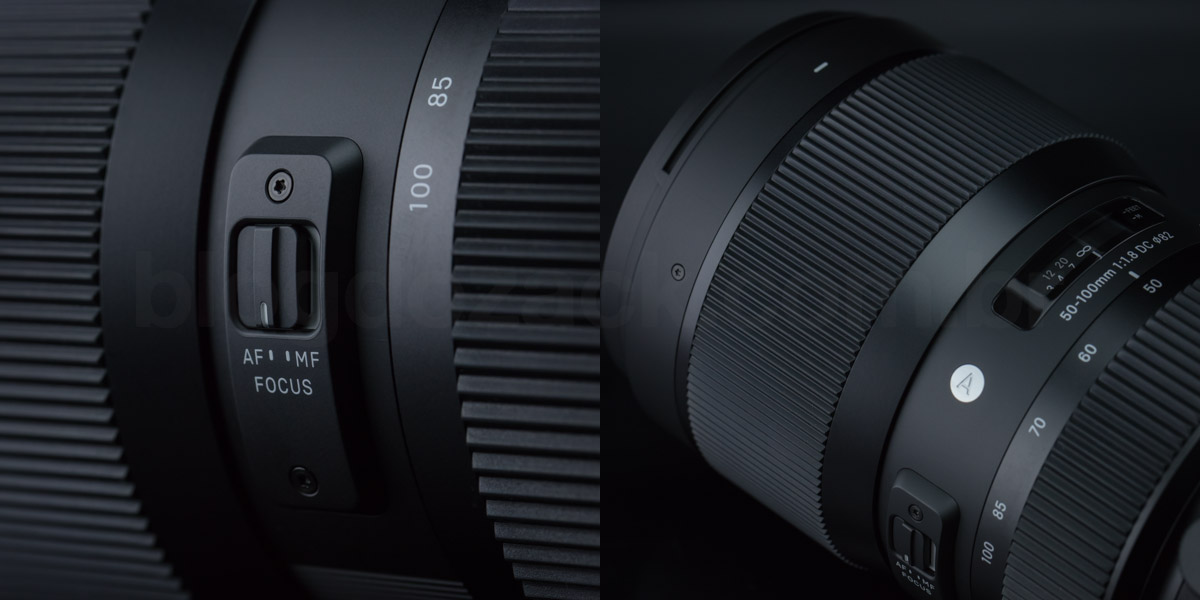
Inside, Sigma put a new HSM auto focus, 30% thinner than before, to fit the larger glasses. Its headline is the apparent higher torque, moving the lenses faster. The results: this is by far the fastest autofocus “non-Canon L” lens I’ve ever used, a giant leap forward for Sigma. While every single Art lens I’ve used had issues autofocusing, 35mm f/1.4DG, 50mm f/1.4DG, 18-35mm f/1.8DC e 24-105mm f/4DG, this 50-100mm doesn’t even feel like a third-party piece. Using Canon’s EOS 80D, with its Dual Pixel Live View, the lens would instantly focus on stationary subjects, like products and landscapes. But it was using the 45 cross-type phase detection module that the 50-100mm really shined: even tracking fast moving subjects during SERVO AF, its precision is very high, with up to 80% of f/1.8 shots in perfect focus. It’s the first time I’ve seen this from Sigma, and maybe I could start considering recommending it to fast action shooters; maybe.

“Panamá” with the EOS 80D + Sigma 50-100mm f/1.8 DC HSM at f/1.8 1/4000 ISO100 @ 100mm.
At the front the 50-100mm accepts ø82mm filters, that are big and expensive, on a plastic thread. This thread looks like it can be easily replaced, as the screws that keeps it in place are on the outside; the only explanation to external screws on such a beautiful hardware. The filters fit inside the included-in-the-box lens hood, that adds 9cm to the already long 17cm lens; it’s big and gathers a lot of attention around the streets. And at the back, the metal mount can be switched for a different system (Sigma, Sony, Nikon, Pentax and Canon are offered), to keep it in your kit for longer. As matter of a fact, the 50-100mm feels like a lifetime tools, besides Sigma’s not adding any form of weather sealing to it; so don’t go singing in the rain with your EOS 7D Mark II or Nikon D500. Also, notice this is not an EF-S mount; it’s an EF, compatible with full frame cameras. However the lens won’t cover the larger sensor area, showing a heavy, low-resolution vignette.
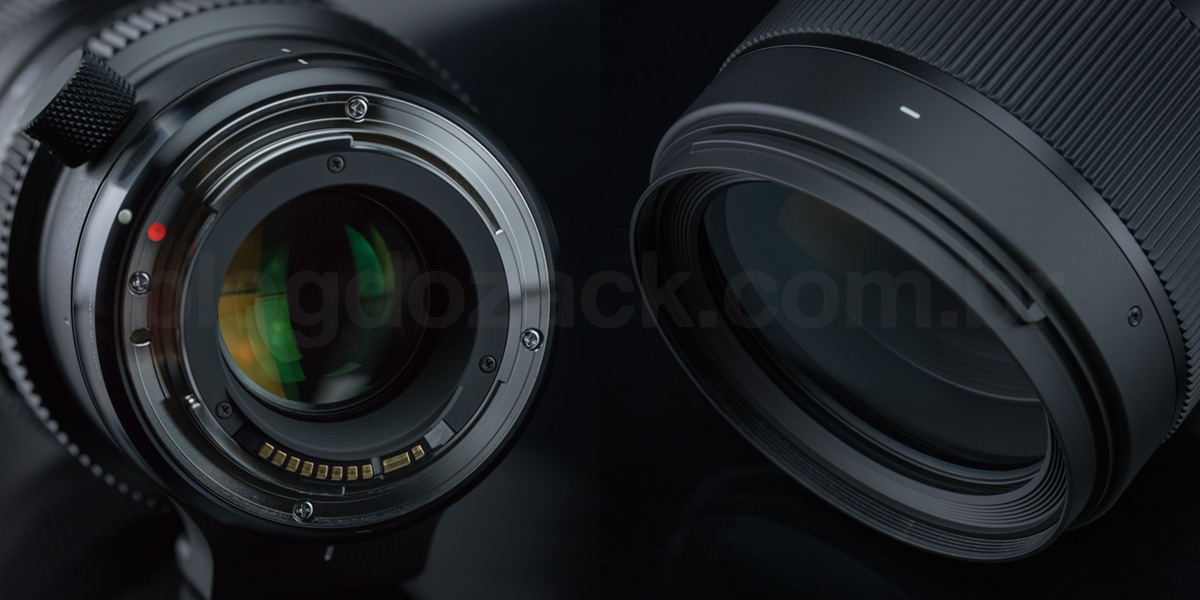
Sigma has been developing some clever technologies on the four-years-old Global Vision lineup, that some brands haven’t developed in the past four decades. Not only it delivers exotic, never-seen-before specs, be it in aperture (f/1.8 zooms) or focal length (20mm f/1.4), but it delivers the tech to make them possible; and the 50-100mm f/1.8 DC HSM is yet another showcase of that. It seems easy after it’s done, but it is not! Sigma’s newly developed composite, the TSC, is an example of “creativity meets engineering”, allowing for true masterpieces on the photographic market, for a fairly low price that will certainly find its place on a lot of photographer’s kits.

“S” at f/5.6 1/250 ISO100 @ 50mm; all photos with the Canon EOS 80D; raw files available at Patreon.
With a 21 elements in 15 groups formula, 1 super low dispersion (SLD), 3 (!) FLD (Sigma’s version of a fluorite lens), 1 high-refractive, Super Multi-coating and a new polycarbonate 9-blade diaphragm, the 50-100mm f/1.8 DC HSM has a lot of high-tech in its optics. These are large glass pieces on a short 2X zoom, with a long minimum focusing distance of 0.95cm. So the optical performance couldn’t be anything but impeccable: this zoom lens is practically the sharpest “50mm f/1.8” lens on the market, and by a large margin; and its contrast and resolution are perfect, no matter the focal length and aperture. Yes, we do see some issues with chromatic aberrations, both easily corrected via software. But overall it’s one of the best lenses I’ve ever seen on blog do zack.

“Calcium” at f/6.3 1/1000 ISO100 @ 100mm.
First things first: let’s take sometime to understand the 50-100mm f/1.8 isn’t truly a substitute for other lenses on the market; so avoid comparing it to various models. Besides being APS-C only, its minimum focusing distance is a very long 0.95cm; far from any full frame counterpart. At 50mm, for example, the Canon EF 50mm f/1.8 STM focuses at just 35cm, much better for close-ups of smaller subjects, like jewelry or flowers. At 85mm, the Canon EF 85mm f/1.8 USM and the Nikon AF-S 85mm f/1.8G both focus at 80cm, closer than the Sigma. Even at 100mm the Sigma falls behind the EF 100mm f/2 (90cm) and doesn’t comes close to the f/2.8 macro (both EF at 34cm). So there’s no magic on Sigma’s f/1.8 zoom. Its glass parts are huge and it’s not close-focus oriented.
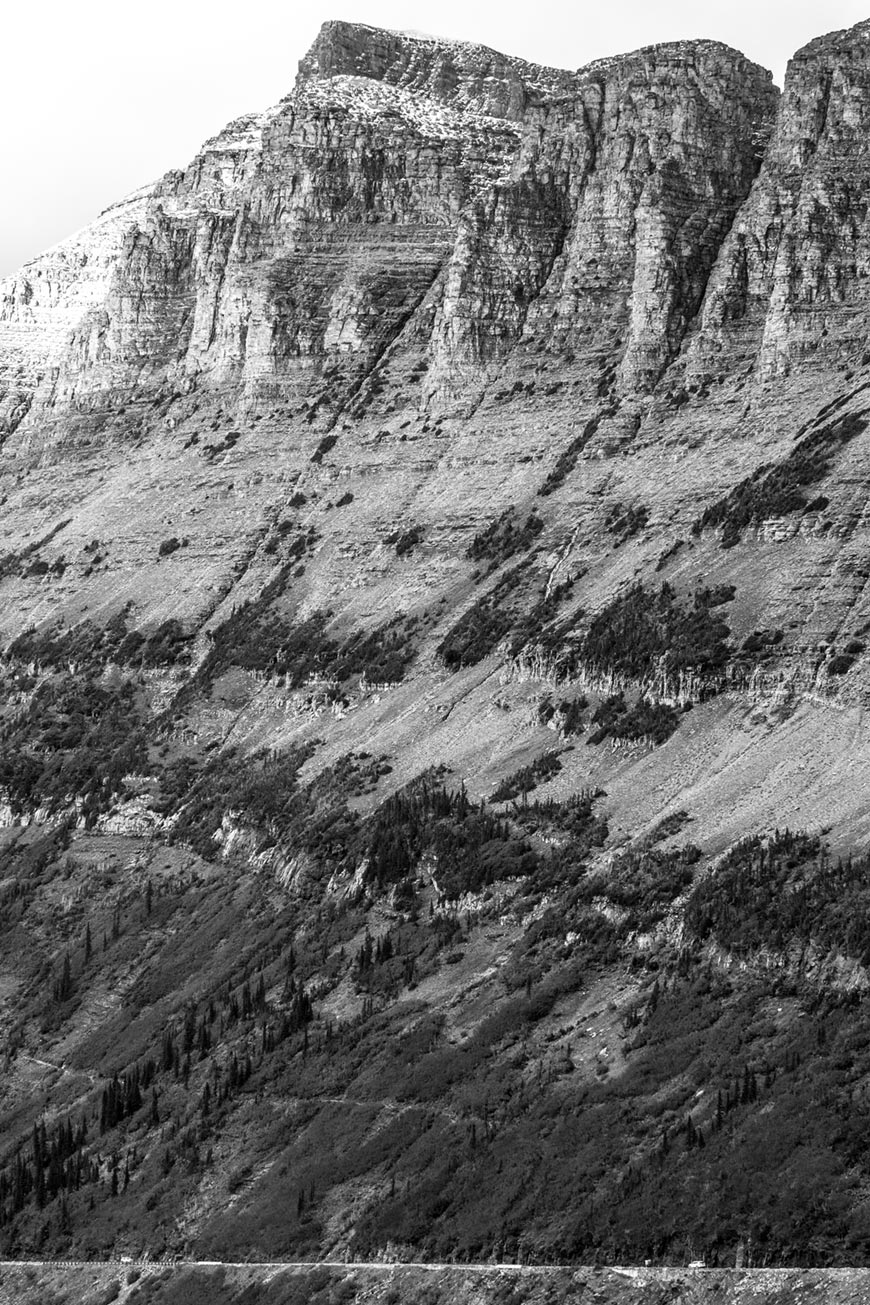
“Secret Road” at f/6.3 1/160 ISO250 @ 50mm.
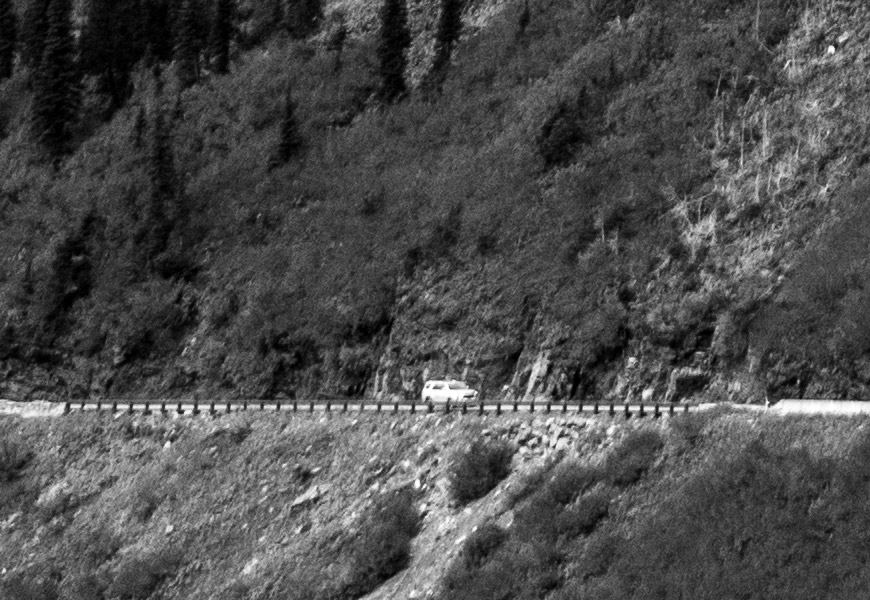
100% crop, details at the edge of the frame; a lens made for distant subjects.
What is truly impressive is its contrast and resolution wide open at f/1.8, near the center frame. While most “cheap f/1.8 primes” (US$499 or less for 50mm and 85mm) show loads of light leaks and purple blobs on high contrast edges, Sigma’s files are incredibly sharp, perfect for half body portraits at 50mm, or headshots at 100mm. It’s really a never-seen-before flexibility for portraits, because the images are clearer, no matter the light situation or the subject. Yes, I mentioned the subject because more than once I get complaints from photographers shooting wide open “nifty fifties” that “explode” with chromed elements (like jewelry) or bright clothing (brides). But on newer “high density” APS-C cameras (24MP+), the Sigma delivers perfect digital files, with a slight drop of resolution just near the edges; visible only on two dimensional scenes (like landscapes).
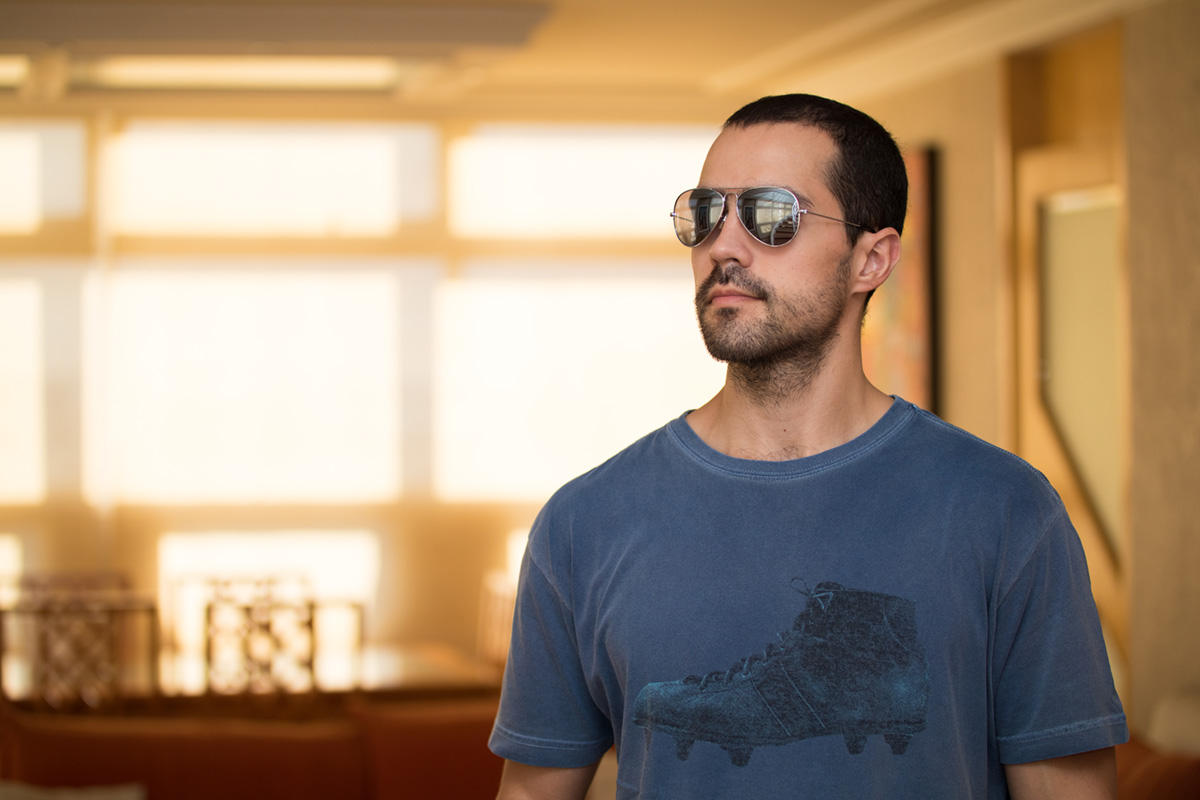
“Self-portrait” at f/1.8 1/500 ISO100 @ 50mm; subject at about 3 meters from the camera; notice the bokeh.

100% crop, slight signs of chromatic aberrations on the chromed sun-glasses; but impeccable wide-open resolution.
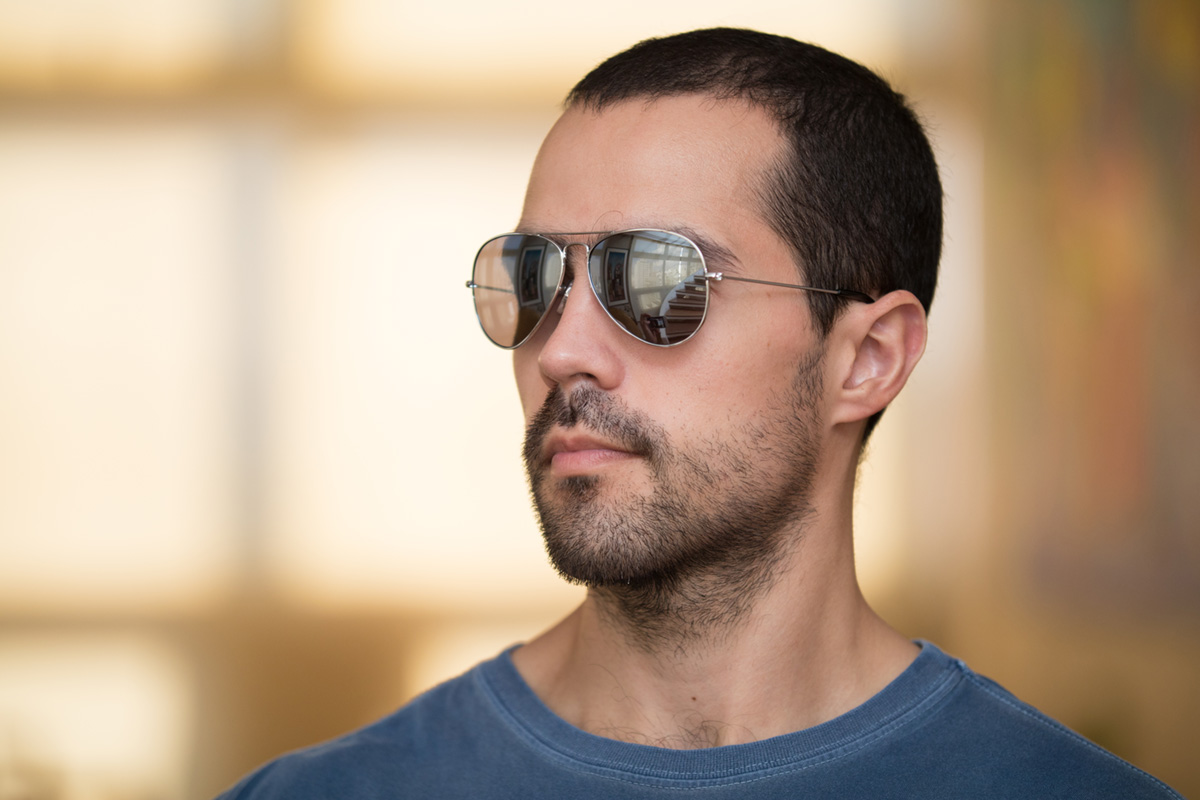
“Self-portrait II” at f/1.8 1/500 ISO100 @ 100mm; perfect subject isolation with the thinner depth of field.
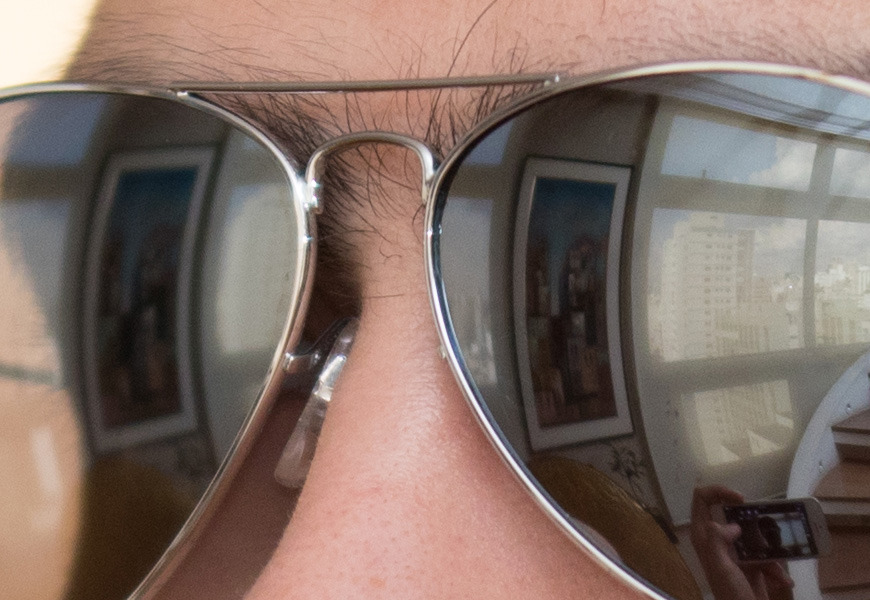
100% crop, no signs of chromatic aberrations and a razor-sharp wide-open resolution, amazing.

100% crop, no signs of blooming, even under loads of light!

100% crop, minimum chromatic aberration on the sunglass.
Stopping down the aperture barely improves the file resolution, correcting only the vignette, less visible from f/2.8 and up. As the larger f/stop uses a smaller aperture, we’re effectively using only the middle of the optics, that are sharper from edge to edge; great for shooting large groups of people or, again, landscapes. Skies and backgrounds are smoothly illuminated by the lack of vignetting, not needing software compensations. But a curious phenomenon occurs when we change the aperture: the flaring shapes are dramatically modified as we stop the lens down, significantly different from what the wide open viewfinder shows. So it’s a good idea to use the lens aperture preview button, to precisely use the “flaring effect” when it happens.

100% crop, impeccable corner sharpness at optimized apertures.

100% crop, giant prints can be done with this zoom files.

100% crop, each tree is perfectly rendered by the 50-100mm, limited by the 24MP EOS 80D sensor.
Chromatic aberrations are well under control, with fine colored edge lines, easily corrected via software; and minimum axial aberrations on the out-of-focus areas. They are a fraction of what we see on the full frame EF 50mm f/1.8 II or the AF-S 85mm f/1.8G, that have inferior quality glasses, unable to properly focus all the light spectrum on a single focusing point. It’s actually better than even Sigma’s own 18-35mm f/1.8 DC HSM, that couldn’t handle the wider angle. It’s the advantage of featuring so many exotic SLD + FLD + High-Refractive pieces, a must for the complex 21 elements formula. Also the geometric distortion is as low as possible besides the 15 groups, with some barrel distortion at 50mm, and pincushion at 100mm, both invisible on most shots.
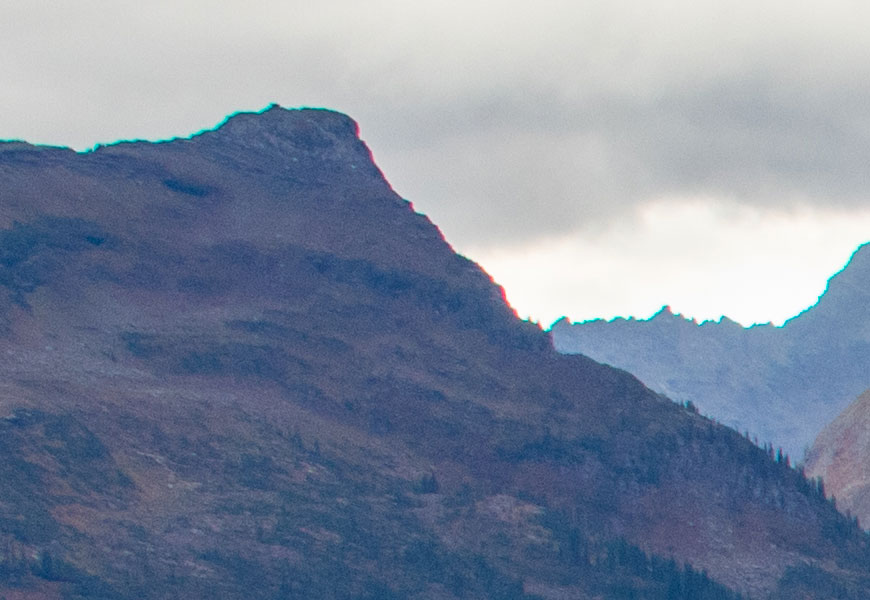
100% crop, some slight lateral chromatic aberration on the frame edge, easily fixed via software.

100% crop, zero chromatic aberration on this example.

100% crop, fine colored lines around the edges of high contrast zones.
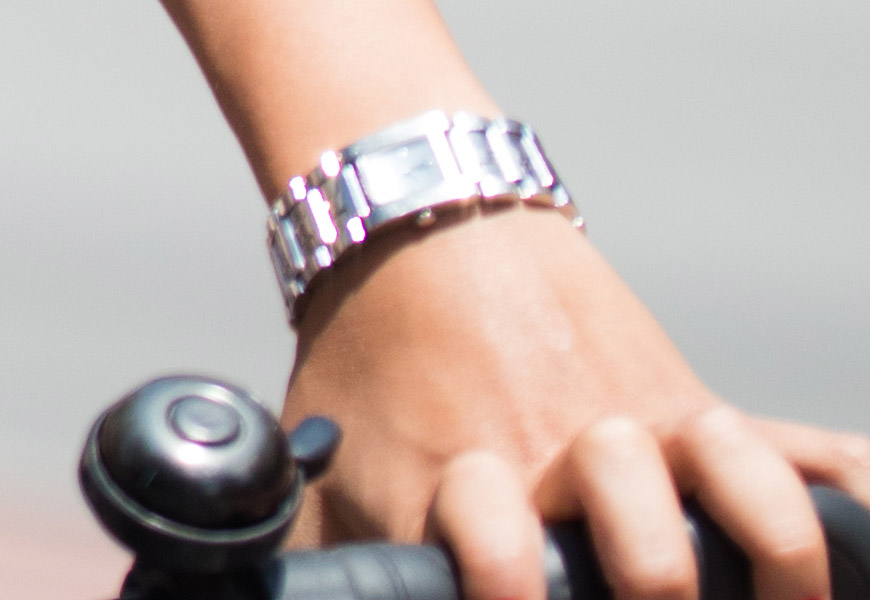
100% crop, minimum axial aberration on an out-of-focus chromed object.
Finally Sigma’s colors seems balanced with Canon’s EF lenses, with saturated reds and yellows, not taking over blues and greens. Portraits are faithful, ready for some software post-processing, with minimal white balance adjustments. Small contrast enhancements also saturate the tones, another proof of the high quality optics. And the bokeh is soft and blurry at shorter focusing distances (less the 3 meters), great to perfectly isolate your subject from the background. It’s a never-seen-before flexibility to work from the studio to the streets, for portraits and landscapes. All on a single lens, made for the next generation of APS-C sensors, as good as most full frames.

“Berry” at f/1.8 1/1000 ISO100 @ 100mm; smooth bokeh at the minimum focusing distance.
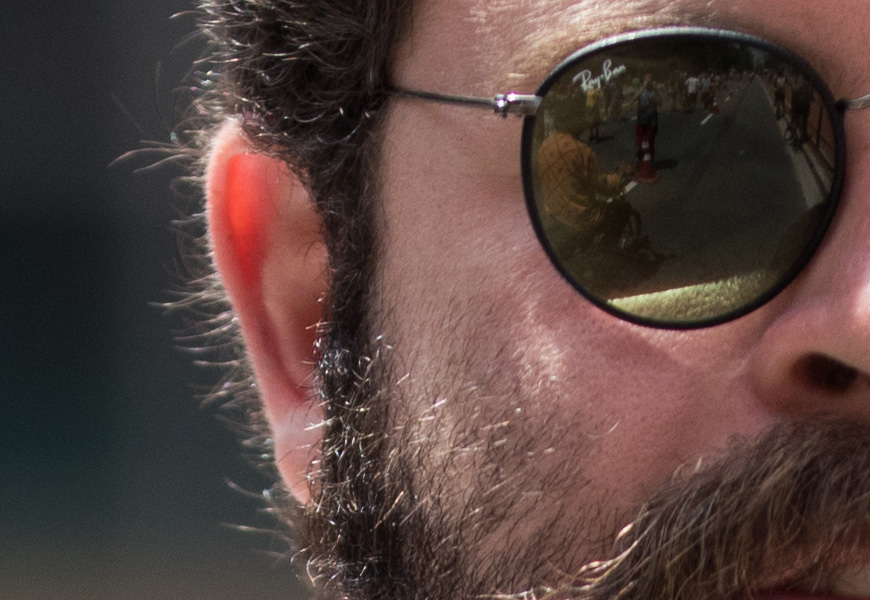
100% crop, perfect wide open details on the frame center.

100% crop, and smooth bokeh on the background.
The Sigma 50-100mm f/1.8 DC HSM is a genuine Art lens. It has a state-of-the-art build, with metal barrels and rings, perfectly damped controls and great ergonomics. It’s a technical feat of engineering on its thinner and faster autofocusing motor, finally in perfect harmony with Canon’s cameras. And the optical formula is a true masterpiece, with the sharpest “50mm f/1.8” on the market and an incredible flexibility to shoot portraits; mandatory for those using APS-C cameras. What really puzzles me is its price. At US$1099 it doesn’t justify the built, the fast AF nor the 21 glass elements. Maybe Sigma’s hiding something about its durability, but that’s hard to attest on such a young lineup. Anyway, if you’re looking for the best zoom to use today, this is it. Nice shooting!